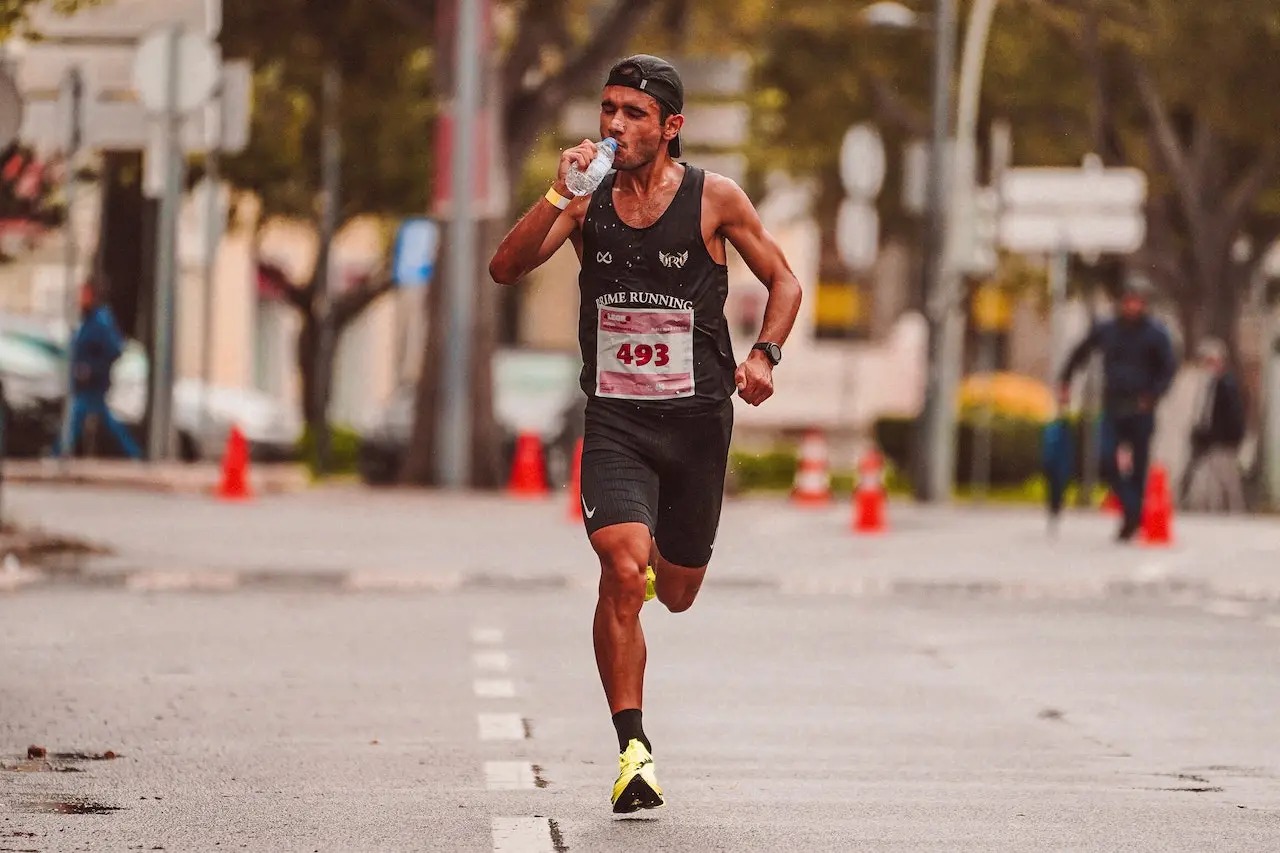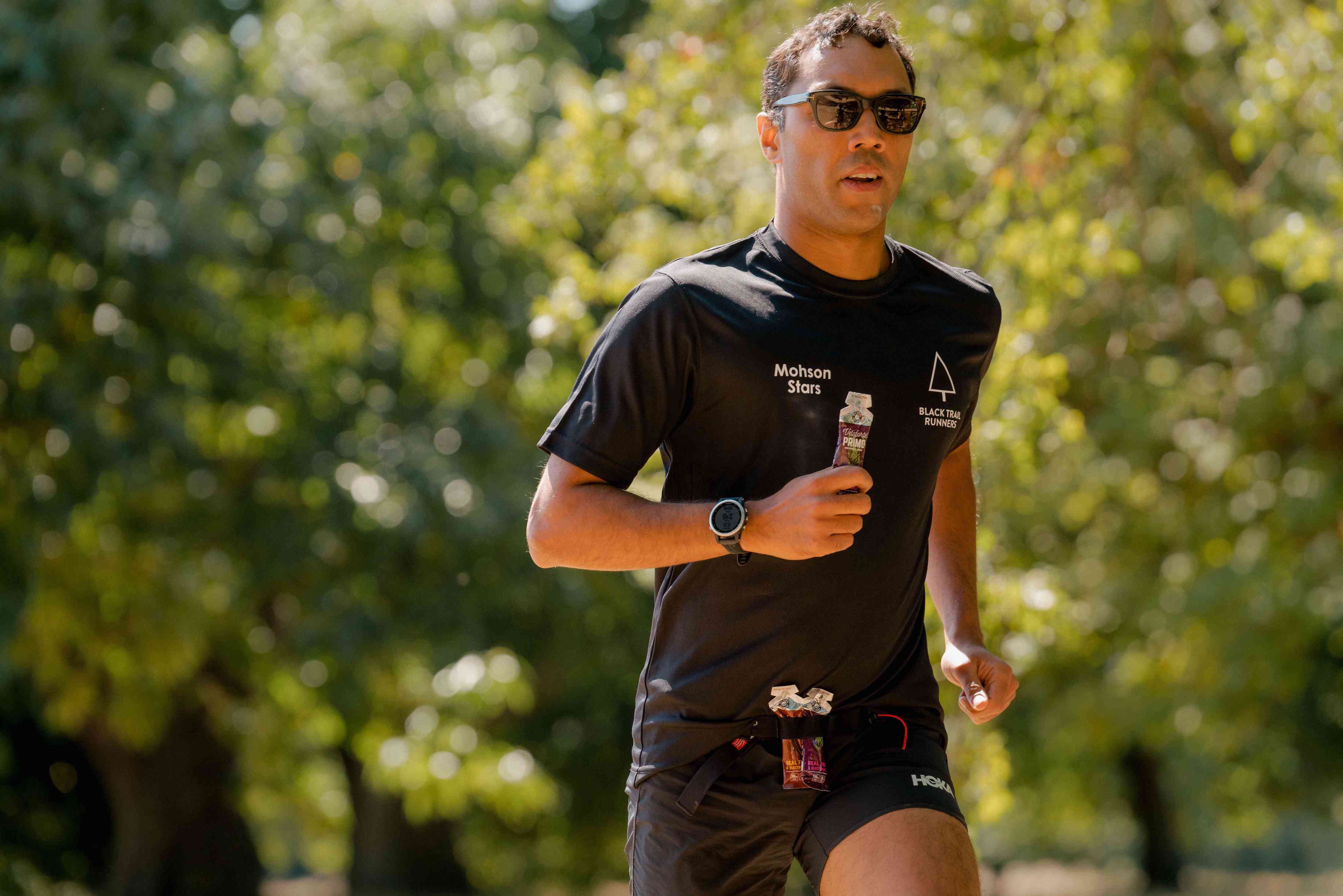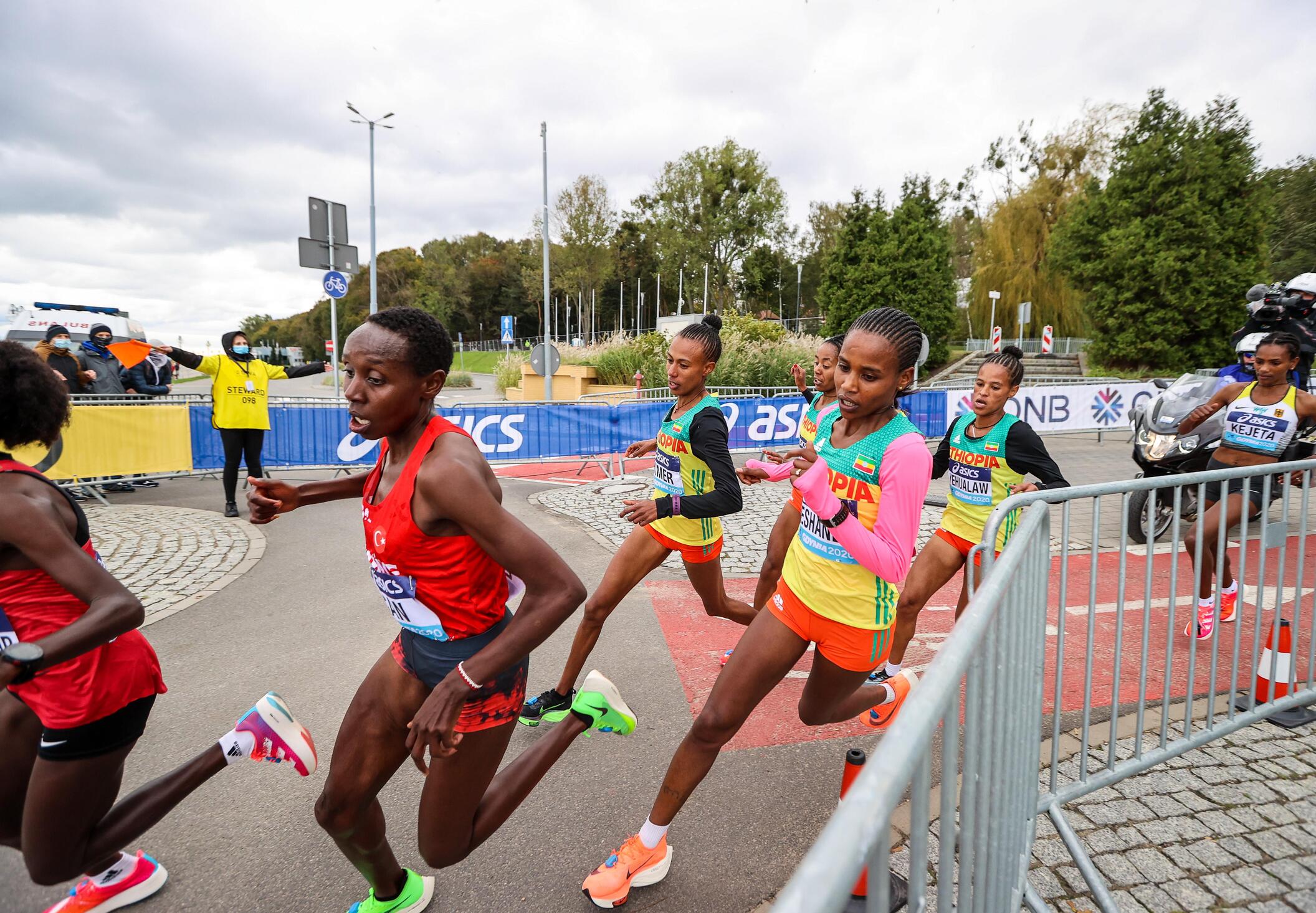

Featured
What Is A Good Pace For Half Marathon
Modified: August 19, 2023
Discover the featured article on what is a good pace for a half marathon. Find tips and guidance to help you set a realistic and achievable time goal to enhance your performance.
Introduction
Welcome to the world of half marathons, where runners push their limits and challenge themselves to complete a 13.1-mile race. Whether you’re a seasoned runner or a beginner, understanding the importance of pacing is crucial for a successful race. In this article, we will delve into the concept of pacing and explore the factors that influence a good pace for a half marathon.
A half marathon is a significant milestone for many runners. It combines the endurance required for longer distances with the speed and agility of shorter races. The key to a successful half marathon is finding the right balance between pushing yourself and conserving energy to maintain a steady pace.
The pace at which you run during a half marathon can greatly impact your overall performance. Running too fast at the start can exhaust you too soon, leaving you struggling to maintain your pace in the latter part of the race. On the other hand, running too slowly may prevent you from achieving your desired time or reaching your full potential. Finding the sweet spot between too fast and too slow is what sets the stage for a satisfying half marathon experience.
There are several factors that can influence your pace during a half marathon. Fitness level, experience, terrain, weather conditions, and personal goals all play a significant role in determining your ideal pace. It is important to understand these factors and take them into consideration when planning your race strategy.
Setting a realistic pace is of utmost importance when training for a half marathon. It requires a thorough understanding of your body’s capabilities and limitations. Overestimating your abilities and aiming for a pace that is beyond your current fitness level can lead to exhaustion and burnout. Conversely, setting a pace that is too comfortable may not challenge you enough to reach your full potential. Striking a balance is crucial to ensure a successful race.
The ideal pace for a half marathon is highly individualized and varies from runner to runner. While some runners may aim for a faster pace to challenge themselves, others may focus on maintaining a steady and sustainable pace throughout the race. It is important to know your own abilities and tailor your pace accordingly.
In the next sections, we will explore strategies to maintain a good pace during a half marathon, training techniques to improve your pace, and common mistakes to avoid. By incorporating these tips into your training and race strategy, you can maximize your potential and achieve your desired goals in the thrilling world of half marathons.
Understanding Half Marathon
A half marathon is a long-distance running race that covers a distance of 13.1 miles or 21.1 kilometers. It is a popular distance among runners of all levels, offering a challenging yet manageable distance that combines endurance and speed. Half marathons attract a wide range of participants, from elite athletes looking for a competitive race to recreational runners seeking personal achievement.
Half marathons are typically organized as road races, taking participants through a designated course that can vary in terrain and difficulty. The race is often held in a city or scenic location, adding to the overall experience for runners and spectators alike.
The appeal of half marathons lies in their accessibility. While longer races such as marathons require months of intense training and preparation, a half marathon can be completed by those who are willing to put in the effort and commit to a structured training plan. It serves as a stepping stone for many runners who aspire to complete a marathon in the future.
Participating in a half marathon requires dedication, discipline, and mental strength. The race tests not only your physical endurance but also your mental fortitude as you push through fatigue and overcome the temptation to slow down or give up. Training for a half marathon involves gradually increasing your mileage, building stamina, and incorporating speed workouts to improve your overall pace.
Half marathons also provide a unique sense of camaraderie among participants. The energy and support from fellow runners, volunteers, and spectators can be incredibly motivating as you strive to achieve your personal goals. Crossing that finish line, no matter the time, is an accomplishment to be celebrated.
It is important to note that each half marathon is different, with its own set of challenges and characteristics. Some courses may be hilly, while others may be flat and fast. Weather conditions can also have a significant impact on race day. Understanding the specific details of the race you are planning to enter can help you craft a race strategy that takes these variables into account.
Whether you are a first-time half marathoner or a seasoned runner looking to improve your time, understanding the nature of the race is essential. It is not just about completing the distance but also about pacing yourself effectively to maximize your performance. In the next sections, we will explore the factors that influence pace and the importance of setting a realistic goal, providing you with the tools to achieve a good pace in your half marathon.
Factors Influencing Pace
When it comes to determining your pace for a half marathon, several factors come into play. Recognizing and understanding these factors can help you set realistic goals and develop a race strategy that maximizes your performance. Here are some key factors that influence your pace:
- Fitness Level: Your current fitness level plays a significant role in determining your pace. Training consistently and incorporating a mix of endurance runs, speed workouts, and cross-training can improve your overall fitness and enable you to run at a faster pace.
- Experience: For first-time half marathoners, it’s essential to approach the race with realistic expectations. Lack of experience may mean that you start at a more conservative pace and gradually speed up as you gain confidence and familiarity with the distance.
- Terrain: The terrain of the racecourse affects your pace. A hilly course may require you to adjust your pace and conserve energy during the climbs, while a flat course allows for a more consistent and possibly faster pace.
- Weather Conditions: Weather can have a significant impact on your pace. Running in hot and humid conditions requires you to adjust your pace and potentially slow down to avoid overheating and dehydration. Similarly, strong winds or rain can also affect your running speed.
- Personal Goals: Your personal goals for the half marathon will influence your pace. If you’re aiming for a personal record (PR), you may push yourself to run at a faster pace. On the other hand, if you’re focused on enjoying the race and completing it comfortably, your pace may be more relaxed.
It is important to consider these factors when setting a realistic pace for your half marathon. Assessing your fitness level, acknowledging your experience, understanding the course terrain, monitoring weather conditions, and establishing clear personal goals will help you determine the pace that is best suited for you.
Keep in mind that these factors are not isolated from each other. They can interact and impact one another. For example, running in hot weather or on a hilly course may require you to adjust your pace even if you are fit and experienced. Similarly, personal goals may influence how you approach the race and determine whether you start at a faster or more conservative pace.
By taking these factors into account and understanding how they can affect your pace, you can make informed decisions and create a race plan tailored to your specific circumstances. The next section will delve into the importance of setting a realistic pace and the impact it can have on your overall half marathon experience.
Importance of Setting a Realistic Pace
Setting a realistic pace for your half marathon is paramount to your success and overall enjoyment of the race. It involves understanding your abilities, considering external factors, and finding the balance between pushing your limits and maintaining a sustainable pace. Here’s why setting a realistic pace is so important:
Conserving Energy: Running at an appropriate pace allows you to conserve energy throughout the race. Starting too fast can lead to early exhaustion and make it challenging to maintain your pace in the later stages. By setting a realistic pace, you can strategically distribute your energy and ensure that you have enough left for a strong finish.
Avoiding Burnout: Pushing yourself beyond your capabilities can result in burnout or injury. It is crucial to set a pace that aligns with your fitness level and experience. Overestimating your abilities can lead to physical and mental fatigue, making it difficult to sustain the desired pace and negatively impacting your performance.
Maintaining Consistency: Running at a consistent pace allows you to maintain a steady rhythm and avoid unnecessary fluctuations. Consistency is key to pacing yourself effectively and achieving your desired time goals. Setting a pace that is neither too fast nor too slow enables you to maintain the desired rhythm and optimize your performance.
Minimizing Mental Stress: Running at a realistic pace reduces mental stress and anxiety during the race. Starting too fast can lead to internal pressure and a constant fear of burning out or not meeting your goals. By setting a pace that you are confident in, you can approach the race with a clear mindset and focus on enjoying the experience.
Improving Long-Term Performance: Setting a realistic pace for your half marathon not only helps you in the immediate race but also contributes to your long-term development as a runner. By gradually increasing your pace over time, you can improve your overall running ability and increase your chances of achieving better results in future races.
Remember, setting a realistic pace doesn’t mean you are settling for less. It means understanding your capabilities, acknowledging external factors, and making informed decisions that lead to a successful race. It is about finding the optimal balance between challenging yourself and running at a pace that allows you to reach your full potential.
In the next section, we will explore the ideal pace range for a half marathon and provide strategies to help you maintain a good pace throughout the race.
Ideal Pace for Half Marathon
The ideal pace for a half marathon is highly individualized and depends on factors such as fitness level, experience, and personal goals. However, there are some general guidelines that can help you determine a target pace for your race.
A commonly used approach to calculate an ideal pace is to base it on your current 10K race pace. In general, a good rule of thumb is to aim for a half marathon pace that is approximately 1.2 to 1.3 times your 10K pace. For example, if your 10K pace is around 8 minutes per mile, your target half marathon pace would be around 9:36 to 10:24 minutes per mile.
Another way to determine an ideal pace is to use a training plan that incorporates a goal time for the half marathon. Many training plans outline specific pace ranges for different workouts and long runs. Following these paces can help you gradually build the speed and endurance necessary for race day.
It’s important to remember that the ideal pace for a half marathon is not necessarily the fastest pace you can sustain. It’s about finding a balance between challenging yourself and maintaining a sustainable pace throughout the entire race. Starting slightly conservatively and gradually increasing your speed as the race progresses is often a successful strategy.
If you have a time goal in mind, it can be helpful to break down your target pace into smaller intervals. For example, if you aim to finish the half marathon in 2 hours, your target pace would be around 9:09 minutes per mile. Breaking it down further, you can aim for consistent splits of around 4 minutes and 34 seconds for each half-mile interval.
Keep in mind that these are just general guidelines, and it’s important to listen to your body and adjust your pace accordingly. Factors such as course terrain, weather conditions, and how you’re feeling on race day can all impact your pacing strategy. It’s always better to start conservatively and adjust your pace as the race progresses rather than going out too fast and struggling to maintain it.
Ultimately, the ideal pace for a half marathon is one that allows you to run comfortably and confidently, while still challenging yourself. Finding this balance takes practice, experience, and self-awareness. It’s a process of trial and error, and it may take several races to truly understand and fine-tune your ideal pace.
In the next section, we will explore strategies to help you maintain a good pace during your half marathon, ensuring that you make the most of your training and achieve your desired goals.
Strategies for Maintaining a Good Pace
Maintaining a consistent and sustainable pace throughout a half marathon can greatly contribute to your overall performance and enjoyment of the race. Here are some strategies to help you maintain a good pace:
- Start Slow and Gradually Build: Begin the race slightly slower than your target pace to conserve energy for later stages. Gradually increase your speed as the race progresses and you settle into a rhythm. This approach helps prevent early burnout and allows you to finish strong.
- Use Mile Markers: Pay attention to mile markers along the course to gauge your pace. Break the race into manageable segments and reassess your pace at each mile marker. This helps you stay on track and make any necessary adjustments.
- Find a Partner or Group: Running with a partner or a group can provide motivation and accountability in maintaining a good pace. Find someone with a similar pace or join a pace group organized by the race to keep yourself on track and encourage each other.
- Focus on Your Breathing: Pay attention to your breathing pattern during the race. Ideally, you should be able to carry on a conversation without feeling breathless. If you’re struggling to maintain a conversation, it may be a sign that you’re pushing too hard and need to adjust your pace.
- Practice Negative Splits: Aim for negative splits, where you run the second half of the race faster than the first half. Starting conservatively and gradually increasing your pace helps you finish strong with energy to spare.
- Hydrate and Fuel Strategically: Proper hydration and fueling play a crucial role in maintaining a good pace. Take advantage of water stations along the course and carry energy gels or snacks if needed. Practice your hydration and fueling strategy during training to avoid any surprises on race day.
- Maintain Good Form: Focus on maintaining good running form throughout the race. This includes a relaxed upper body, proper posture, and efficient arm and leg movements. Good form enhances your running efficiency and helps maintain a consistent pace.
- Visualize and Use Mantras: Positive visualization and the use of motivational mantras can be powerful tools to maintain a good pace. Picture yourself running strong and repeating encouraging phrases in your mind to stay focused and motivated.
Experiment with these strategies during your training runs to see which ones work best for you. Remember that maintaining a good pace is not just about physical endurance but also mental resilience. Stay focused, stay positive, and trust in your training. The combination of physical preparedness and mental fortitude will help you maintain a strong and consistent pace throughout your half marathon.
In the next section, we will explore training techniques that can help improve your pace and overall performance in a half marathon.
Training to Improve Your Pace
To improve your pace for a half marathon and reach your desired goals, it is essential to incorporate specific training techniques into your routine. Here are some effective strategies to help you improve your pace:
- Interval Training: Interval training involves alternating high-intensity running with periods of active recovery. This type of training helps improve your aerobic capacity, speed, and overall efficiency. Incorporate interval sessions into your weekly training schedule, gradually increasing the intensity and duration as your fitness level improves.
- Tempo Runs: Tempo runs are runs performed at a comfortably hard pace, just below your lactate threshold. These workouts help improve your ability to sustain a faster pace over a longer distance. Include one or two tempo runs in your training each week to develop your ability to maintain a steady race pace.
- Long Runs: Long runs are an essential component of half marathon training. These runs help build endurance and mental strength. Incorporate one long run each week, gradually increasing the distance over time. As you progress, aim to run these at or slightly slower than your goal race pace.
- Hill Training: Including hill workouts in your training regimen can significantly improve your strength and speed. Find hills of varying inclines and incorporate hill repeats into your training plan. Uphill running helps build leg strength and downhill running improves your ability to handle faster paces.
- Strength Training: Incorporate strength training exercises that target your lower body, core, and upper body into your routine. Strength training improves overall body strength, stability, and running economy. It also helps maintain good form and prevent injuries, allowing you to maintain a strong and consistent pace.
- Rest and Recovery: Rest and recovery are key aspects of any training plan. Adequate rest allows your body to adapt and become stronger. Incorporate rest days into your schedule and prioritize sleep, hydration, and nutrition to optimize your training and maximize your pace improvement.
- Track Your Progress: Keep track of your training runs, paces, and distances. Use a running app or a training log to monitor your progress and evaluate your improvements. This will help you stay motivated and adjust your training plan as needed.
Consistency is key when it comes to training for pace improvement. Stick to your training plan, gradually increase your mileage and intensity, and listen to your body. It’s normal to experience some setbacks or plateaus along the way, but stay focused and trust the process. With dedication and hard work, you can steadily improve your pace and achieve your goals in the half marathon.
In the next section, we will explore common mistakes to avoid when aiming to maintain a good pace in your half marathon.
Common Mistakes to Avoid
When striving to maintain a good pace in your half marathon, it’s important to be aware of common mistakes that can hinder your performance. By avoiding these pitfalls, you can set yourself up for success and achieve your desired race results. Here are some common mistakes to steer clear of:
- Starting Too Fast: One of the most common mistakes is starting the race at a pace that is too fast. It’s natural to feel excited and motivated at the beginning, but going out too quickly can lead to early fatigue and make it difficult to maintain your pace later on.
- Ignoring Proper Warm-Up: Neglecting to warm up properly before the race can increase the risk of injury and negatively impact your pace. A dynamic warm-up routine, including stretches and activation exercises, prepares your muscles for the demands of the race.
- Neglecting Hydration and Nutrition: Failing to properly hydrate and fuel your body before and during the race can lead to dehydration, fatigue, and inadequate energy levels. Develop a hydration and nutrition plan during your training and stick to it on race day to maintain a good pace.
- Not Practicing Pacing in Training: Pacing is a skill that needs to be practiced during training runs. Failing to practice and gauge your pace during your training can result in poor pacing strategies and difficulty maintaining a consistent pace during the race.
- Overlooking Mental Preparation: Mental preparation is just as important as physical preparation. Neglecting to train your mental game can make it challenging to push through tough moments during the race and maintain a positive mindset, which can affect your pace.
- Ignoring Rest and Recovery: Rest and recovery are vital parts of a training plan. Failing to include adequate rest days or not prioritizing recovery practices can lead to overtraining, fatigue, and reduced ability to maintain a good pace.
- Not Adjusting Pace for Weather Conditions: Weather conditions can significantly impact your pace. Failing to adjust your pace based on factors such as heat, humidity, or strong winds can lead to overexertion or a slower pace than desired.
- Poor Race Strategy: Having a well-thought-out race strategy is key to maintaining a good pace. Failing to have a plan, such as mile-by-mile pacing goals or strategies for tackling hills, can result in ineffective pacing and loss of momentum.
By being aware of these common mistakes and taking measures to avoid them, you can optimize your chances of maintaining a good pace in your half marathon. Learn from the experiences of other runners, seek advice from seasoned athletes, and trust in your training and race strategy.
In the next section, we will wrap up and summarize the key points discussed in this article, leaving you with some final thoughts on maintaining a good pace in a half marathon.
Conclusion
Maintaining a good pace in a half marathon is essential for a successful and enjoyable race. It requires careful planning, training, and a keen awareness of factors that influence your pace. By understanding your fitness level, experience, and setting realistic goals, you can determine an ideal pace range that aligns with your abilities.
Strategies such as starting slow, utilizing mile markers, running with a partner or group, and focusing on your breathing can help you maintain consistency and reach your desired pace. It’s crucial to avoid common mistakes like starting too fast, neglecting proper warm-up, inadequate hydration and nutrition, and poor race strategy.
Training to improve your pace involves incorporating interval training, tempo runs, long runs, hill training, strength training, rest, and recovery into your routine. Consistency, monitoring progress, and mental preparation are equally important for enhancing your pacing abilities.
Remember, maintaining a good pace doesn’t mean sacrificing enjoyment. It means finding the balance between challenging yourself and running at a sustainable pace. Each half marathon is a unique experience, so learn from every race and adjust your pacing strategies accordingly.
As you embark on your half marathon journey, embrace the process, trust your training, and stay committed to your goals. By setting a realistic pace, implementing effective strategies, and avoiding common mistakes, you can maximize your potential and achieve a fulfilling and memorable half marathon experience.









